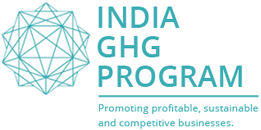As part of its ongoing efforts to help policymakers and civil society address climate change while ensuring economic prosperity and sustainable development, WRI is undertaking a carbon market simulation across 30-40 large companies in India.
Objective
The simulation aims to help businesses demonstrate climate leadership and leverage the opportunities from such mechanisms to meet their emission reduction goals. The simulation also aims to build business readiness towards a potential carbon market, especially amongst the medium, small and micro enterprises (MSMEs) part of value chains of the participating companies. Learnings and industry feedback from this virtual market would also help provide concrete policy recommendations for a potential carbon market in India that is efficient, sustainable, facilitates accelerated emission reductions at the least cost to the society and helps India achieve its Nationally Determined targets.
Background
India’s international climate commitments include a reduction goal in greenhouse gas (GHG) emission intensity of GDP by 33-35% until 2030 (compared to 2005 levels) and a target to increase the share of non-fossil fuel energy sources to 40% by 2030[1]. Additionally, India also targets to install over 175 GW of renewable energy by 2022, with a recent announcement that India will have 450 GW of renewables.
Carbon Pricing is one of the key tools to facilitate a low-carbon transition. Carbon markets and international voluntary cooperation are set to play a critical role in meeting climate targets at the lowest costs. Pilots and simulations in emerging economies such as China, Mexico and Brazil are indicative of imminent market-based mechanisms globally. While an implicit carbon tax (national clean energy cess) was implemented in India, additional considerations on a cap and trade scheme are being made to accelerate progress towards India’s NDCs. India has signed up and is now a participant to the World Bank’s Partnership for Market Readiness (PMR). Under the PMR[2], India plans to explore and pilot new market-based mechanisms (MBMs) in Waste and MSME sectors and establish an integrated data management and registry for India's GHG emissions.
Approach
To support evidence-based design and implementation of a potential carbon market in India, WRI India aims to work with industry, policy makers, as well as civil society, through a carbon market simulation anchored across 30-40 large businesses (including sectoral leaders) covering about 50-60% of India’s total industry related emissions.
The simulation consists of two phases:
- Phase I: Design and Scoping – Completed
The design phase constituted secondary research of existing market mechanisms and policy landscape globally and domestically[3] and extensive consultations with global experts and sectoral leaders from Indian Industry[4]. Under this, WRI Experts contextualized learnings from four emissions markets operating at city, state, regional and international levels, to India in terms of i) their goals; ii) design; iii) outcomes and impacts; iv) challenges; and v) international linking.
This, along with an understanding of the past and ongoing market mechanisms and policies in India, provided insights on the opportunities, challenges, design considerations for a carbon market in India. Consultations with key stakeholders including business leaders in the Indian industry helped shape the proposed design for the simulation based on sectoral challenges and opportunities.
- Phase II: Implementation - Ongoing
In consultation with participating companies, the ongoing phase entails finalization of design, targets and implementation modalities for the simulation, followed by three trading cycles under the simulation.
The broad components of the implementation phase include:
1. Company Onboarding
- Closely work with the participating companies to confirm baseline data, receive feedback and finalize targets, Monitoring, Reporting and Verification (MRV) and simulation design.
2. Trading Platform & Registry Setup
- Setting up of Trading Platform and Registry platforms based on final design of the simulation
3. Simulation Launch
- Workshop to disseminate operational information and timelines for reporting and trading
- Demo on MRV form and trading platform
- Technical assistance to companies on monitoring and reporting to ensure the implementation of MRV framework and compliance with the simulation
4. Trading Cycles
- At the end of a compliance period, the regulated entities would be required to surrender one allowance for every tonne of emissions for which they are accountable. Allowance shortfall or in excess of target would be traded during the trading cycles in (April, July and October 2020)
- Measurement of outcomes - Based on the trading of the allowances, WRI would monitor and document the performance of the market on reductions achieved, price stability, trading volume, challenges, and learnings
Planned Outcomes:
- Carbon Market Planning and Implementation Guide for the Indian context based on -
- Global learnings, best practices and trends from Phase 1
- The learnings from the simulation exercise and relevant recommendations for the Indian context to support policymaking
- Feedback from participating companies on challenges, opportunities, sector specific design recommendations
2. Roundtable with key stakeholders, including industry, research organizations, think tanks and policymakers to present findings from simulation and recommendations for a carbon market in India
3. Capacity Building: WRI India will support all participating businesses and the MSMEs within their supply chains with research, knowledge, and findings, by hosting a series of webinars and information-sharing sessions with companies, thereby building institutional capacity within large corporates and MSMEs during the implementation phase.
Ongoing activities supported by:
Click here to read the concept note on this project.
For more details, please contact Ashwini Hingne (ashwini.hingne@wri.org) or Megha Nath (megha.nath@wri.org).
